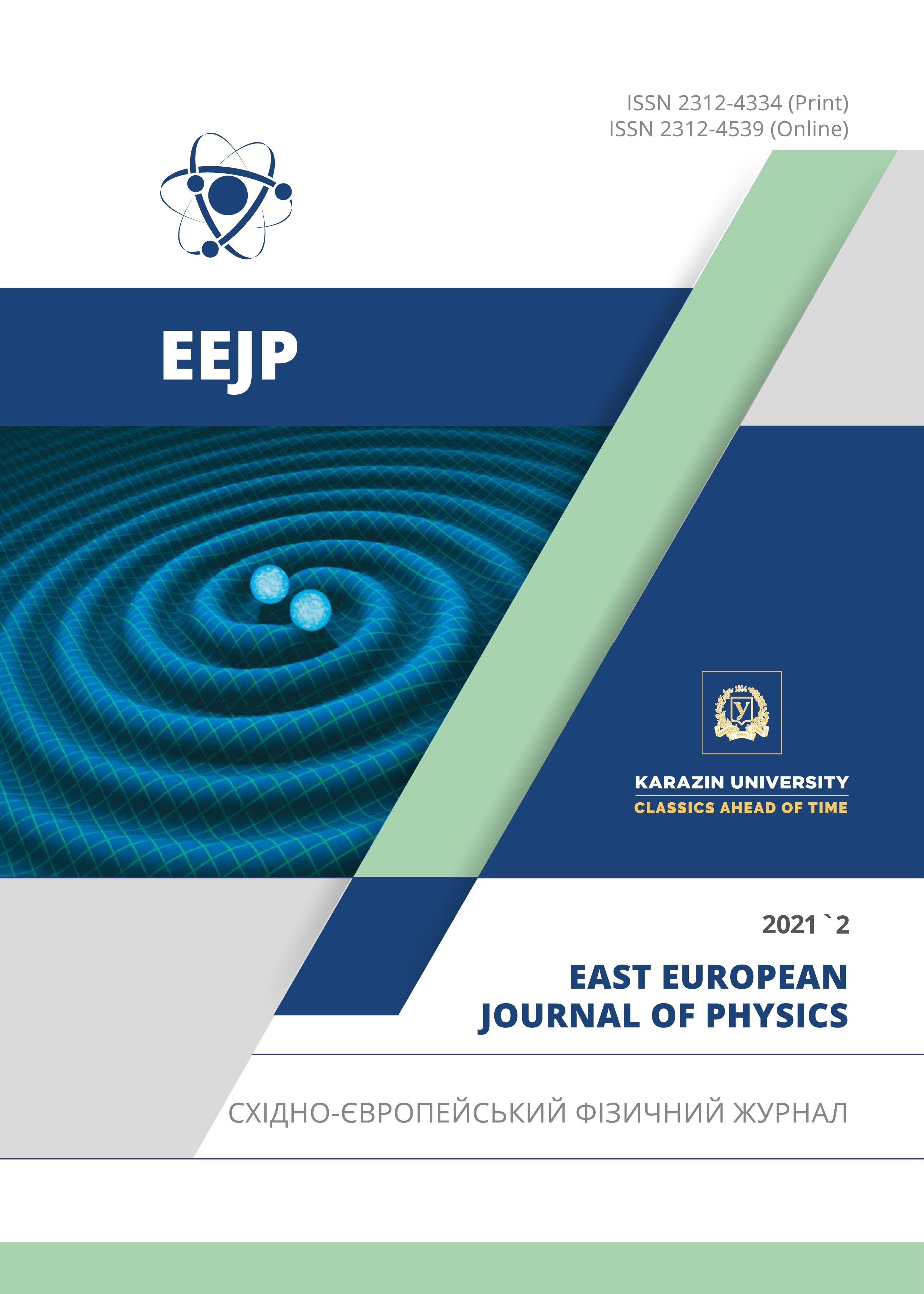Propagation Analysis of Pu Radionuclides as a Result of Fire Incidents in the Exclusion Zone of the Chernobyl NPP in April 2020
Abstract
In consequence of nuclear accidents that have occurred in various parts of the world, radioactive contamination of the environment is observed. The risks of spreading pollution can increase during floods, fires and some natural disasters. The lack of effective measures that aimed at eliminating possible sources of fire in the meadow zone and forest lands in the Chernobyl exclusion zone (ChEZ) leads to a high risk of fire emergence. The temporal and spatial distribution of fires shows that they occur throughout the ChEZ, including in the most contaminated areas. The risk of fires increases with climate change and measures to prevent them should be considered in emergency programs. ChEZ area is contaminated with long-lived radionuclides such as 137Cs, 90Sr, Pu isotopes (238Pu, 239 + 240Pu, 241Pu) and 241Am. As a result of forest fires radionuclides contained in wood and underlying surface are carried out into the atmosphere along with smoke. Diseases arising under the influence of ionizing radiation from Pu and 241Am isotopes pose a serious problem for human health. To assess of the spatial distribution of Pu isotopes and 241Am we used data on forest fires that occurred in the Chernobyl zone in April 2020. To evaluatе the dynamics of the release of radioactive substances into the atmosphere during fire incidents on the ChEZ territory, the following software products were used: NASA WorldView, HYSPLIT program. The HYSPLIT program allows to reconstruct the trajectories of radionuclide propagation in the atmosphere using meteorological data and to obtain a reliable picture of the distribution of radionuclides in the study area. The maps of the volumetric activity of Pu isotopes in the air and the fallout on the soil as a result of fires were obtained. It was found that the radioactivity due to the presence of this element in the air and during the fallout of radioactive particles on the soil is low (it reaches 1.0E-7...0.1 Bq/m3 in the air, 1.0E-6...1 Bq/m2 on the soil). The analysis of the propagation of Pu isotopes as a result of the movement of air masses in the places of fires in the exclusion zone of the Chernobyl nuclear power plant and the associated dangers for the population and the environment has been carried out.
Downloads
References
B.S. Prister, A.A. Klyuchnikov, V.G. Baryakhtar, V.M. Shestopalov, and V.P. Kukhar, Проблемы безопасности атомной энергетики. Уроки Чернобыля [Nuclear power safety problems. Lessons from Chernobyl], (NAS of Ukraine, Institute of NPP safety problems, Kyiv, 2016), pp. 356. (in Russian)
S.V. Zibtsev, J.G. Goldammer, S. Robinson, and O.A. Borsuk, Unasylva, 243/244(66), 40-51 (2015), http://www.fao.org/3/I4447E/i4447e.pdf.
V. Kashparov, S. Levchuk, M. Zhurba, V. Protsak, Yu. Khomutinin, N.A. Beresford, and J.S. Chaplow, ESSD, 10, 339-353 (2018), https://doi.org/10.5194/essd-10-339-2018.
L.Ya. Tabachny, and etc, Атлас Україна. Радіоактивне забруднення [Atlas Ukraine. Radioactive interference], (TOV "Intellectual Systems GEO", 2008), pp. 52. (in Ukrainian)
M.F. Kozhevnikova, V.V. Levenets, I.L. Rolik, and A.A. Shchur, PAST, 3(109), 26-30 (2017), https://vant.kipt.kharkov.ua/ARTICLE/VANT_2017_3/article_2017_3_26.pdf. (in Russian)
J. Peterson, M. MacDonell, L. Haroun, and F. Monette, Radiological and Chemical Fact Sheets to Support Health Risk Analyzes for Contaminated Areas, (Argonne National Laboratory Environmental Science Division, 2007), pp. 133, https://www.philrutherford.com/Radiation_Links/ANL_ContaminantFactSheets_All_070418.pdf.
V. Protsak, O. Voitsekhovych, and G. Laptev. Estimation of radioactive source term dynamics for atmospheric transport during wildfires in Chernobyl zone in spring 2020. (Ukrainian Hydrometeorological Institute, Kiev, 2020). https://uhmi.org.ua/msg /fire2020/analytical.pdf. (in Ukrainian)
R.R. Draxler, and G.D. Hess, Description of the HYSPLIT-4 Modeling System. Silver Spring: Air resources Laboratory, NOAA Technical Memorandum ERL ARL-224. pp. 22. (1997), https://www.arl.noaa.gov/documents/reports/arl-224.pdf
M. De Cort, Y.S. Tsaturov, Directorate-General for Research and Innovation (European Commission), European Commission, Atlas of cesium deposition on Europe after the Chernobyl accident, (Office for Official Publications of the European Communities, Luxembourg, 1998), pp. 63, https://op.europa.eu/s/oXu8
Information note n°5, (IRSN, 2019), pp. 11, https://www.irsn.fr/EN/newsroom/News/Documents/IRSN_Information-Report_Fires-in-Ukraine-in-the-Exclusion-Zone-around-chernobyl-NPP_05052020.pdf
Assessment of the distribution of radionuclides and the impact of industrial facilities in the Chernobyl exclusion zone (Final Report). INRIR, 2018, 217 p. http://chornobyl-gef.com/wp-content/uploads/2018/05/Assesment-of-Distr.-Radioact.pdf
O.A. Shurankova, and V.P. Kudryashov, Problems of health and ecology, 1(7), 67-71 (2006), https://elib.gsmu.by/handle/GomSMU/1075. (in Russian)
Authors who publish with this journal agree to the following terms:
- Authors retain copyright and grant the journal right of first publication with the work simultaneously licensed under a Creative Commons Attribution License that allows others to share the work with an acknowledgment of the work's authorship and initial publication in this journal.
- Authors are able to enter into separate, additional contractual arrangements for the non-exclusive distribution of the journal's published version of the work (e.g., post it to an institutional repository or publish it in a book), with an acknowledgment of its initial publication in this journal.
- Authors are permitted and encouraged to post their work online (e.g., in institutional repositories or on their website) prior to and during the submission process, as it can lead to productive exchanges, as well as earlier and greater citation of published work (See The Effect of Open Access).








